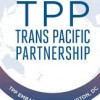Partnership Trans-Pacific: It means nothing
Kevin Granville | Tra Mi translation
 Like a giant container ships in dock, trade agreement called the Trans-Pacific Partnership (TPP) is about to anchor in Washington.
Like a giant container ships in dock, trade agreement called the Trans-Pacific Partnership (TPP) is about to anchor in Washington.
This booklet huge and secret, until about 30 chapters, and is still
continuing negotiations after nearly 10 years of negotiations.
It will set new terms for trade investment and business between the
United States and 11 countries Pacific Ven other - a group of countries
beyond the total annual domestic product nearly 28 trillion red- la,
about 40% of global GDP and a third of world trade.
TPP Proponents say it would bring benefits for all countries involved, and it will "unlock opportunities" and "addressing the very important issue of the 21st century in the world economy bridge ", and that it was drafted in a way to encourage more water, maybe even China will also join in.
Congress passed as one of the ultimate goals in this term of President
Obama, but he faces stiff opposition from almost all Democrats.
Opponents in the USA see TPP largely a written agreement for the
business world, encourages the continued export of manufacturing jobs to
low-wage countries while restricting competition and encourage price
higher for pharmaceuticals and other high-value products by spreading
American standards to protect patents to other countries.
A provision allowing multinational corporations can not admit those
provisions and rulings of the Special Tribunal are being backlash.
Which countries participate?
Australia, Brunei, Canada, Chile, Japan, Malaysia, Mexico, New Zealand, Peru, Singapore and Vietnam, and the United States.
Why TPP, and why at this time?
This Treaty is a major component of the policy of "rotation axis" of President Obama to Asia.
It is seen as a way of binding the trading partners in the Pacific
Coastal closer to the United States during the upgrade challenge for
China, which is strong in Asia, has flatly rejected from the
negotiations, at least for now.
It is seen as a means to solve some festering issues that have become
obstacles while global trade is soaring, including e-commerce, financial
services and media Internet across the border.
There are also issues relating to traditional trade.
The United States is keen to establish trade agreements with five of
the official participating TPP countries - Japan, Malaysia, Brunei, New
Zealand and Vietnam - and strengthen the NAFTA (North American Free
Trade Agreement), agreed existing agreement with Canada and Mexico.
Moreover, the efforts of global trade was staggered (such as the Doha
round of World Trade Organization, WTO), the treaty of the Trans-Pacific
Partnership is billed as one document with an "open architecture"
written easily applied to other Asian countries, and to provide a model
for other initiatives underway, such as the Trans-Atlantic Trade and Investment Partnership.
Some of the issues on the negotiating table is what?
Tariffs and quotas
| Often used to protect domestic industries with cheap foreign goods,
import duties once a standard, a feature of the trade policy, and bring
large revenue for the US Treasury in the 19th century after the economic
crisis in the 1930s and World War II, the United States led a movement
toward freer trade.

Photo: A factory making shoes (United Development) in Vietnam. US shoe import tax. Source: Aaron Joel Santos / The New York Times
Today, the United States and most developed countries at export tax, but still some. United
States, for example, still protect the domestic sugar market before the
global suppliers selling lower price and are taxed on shoe imports,
while Japan imposed heavy taxes on agricultural products such as rice ,
meat and milk. TPP treaty was an effort almost creating a free trade area in the Pacific Ven.
Environmental Standards, Labor and Intellectual Property
| About US negotiators insist that the TPP will seek to create a level
playing field by imposing strict standards on labor and the environment
with commercial partners, and monitoring of intellectual property
rights.
Field Data | US wants trade agreements Pacific solve some of the problems that have arisen since the agreement was negotiated previously.
One is that the participating countries agreed not to block the flow of
data across borders using the Internet, and does not require that the
server must be placed in the interior to conduct business in that
country.
This proposal has caused concern for some countries which Australia is
an example, said that this provision may conflict with laws that protect
the privacy and regulations for personal data stored overseas.
Service
| A major objective of the Trans-Pacific pact are increasing
opportunities for service industries, accounting for most of the private
jobs in the US economy.
The United States has a competitive advantage in a wide range of
services, including financial, technical, software, education, legal and
information technology.
Although these services are not taxed, the restrictions and
requirements of the country for investment by many developing countries
used to protect local businesses.
State Enterprise
| About US negotiators have discussed the need to address the bias is
usually reserved for state enterprises - enterprises directly or
indirectly belongs to the government.
Although Vietnam and Malaysia have many such groups, the United States
also has a number of such (eg the postal service and Fannie Mae and
services to help low-income Americans to the average mortgage ).
Final treaty could include provisions ensuring relatively neutral
competition while keeping the door open to be able to accept China's
accession to the treaty in the future.
Why secret?
Office of the US Trade Representative said
"The negotiations need to communicate with each other by frankness, creativity and trust each other at a high level. To create the conditions necessary to achieve success in negotiating trade agreements and investment complex, national governments are negotiating regularly hold these proposals and their communication with each other in secrecy. "
But the previous trade agreements have been notified more openly and
despite the efforts of confidentiality, some of the documents of the
treaty have leaked out, with WikiLeaks and other organizations .
Why China is not present in the TPP?
China has never expressed the intention to join the negotiations, but
in the past have monitored the negotiation pact with concern, as this
could be a threat to the United States tried to strengthen bonds
relations with trading partners in Asia.
But recently, when negotiations were accelerated, high-level officials
of China have seemed easy to accept this treaty over, and even suggested
that they might want to join in the future. Meanwhile, TPP gave China some opportunities while they are pursuing a trade agreement in the region itself, as the Silk Road Initiative in Central Asia.
US officials, while determining that they considered TPP agreement is
part of an effort to counter the influence of China in the region, but
still say they are hoping that the "open architecture" of TPP China will
promote participation with the important economic powers such as South
Korea.
The shadow of NAFTA, and the debate in Washington

President Bill Clinton has the support of Congress for NAFTA, but most of the lawmakers in his party voted against. Source: Doug Mills / Associated Press
NAFTA, which was approved by President Bill Clinton in 1993, has
contributed to the strong development of trade between the United
States, Mexico and Canada.
All three countries export more goods and services to two other
countries, greater cross-border investment, and the US economy has added
more millions of jobs since then.
But of course not all of these results are caused by NAFTA, and
national interests are not equal: the US has a trade surplus with Mexico
when little pact was signed, has quickly become a deficit Commerce,
more than $ 50 billion a year. NAFTA critics also said that job growth in the United States regardless of the number of jobs lost to Mexico or Canada; AFL-CIO organization that 700,000 US jobs were lost or moved because of NAFTA.
NAFTA was an important victory for President Clinton after hard
struggle in Parliament, where he won the support of Democrats just
enough to secure contracts through treaty. Then votes in the House 234-200 and the Senate 61-38.
Obama can only hope such results. Most Democratic lawmakers have vehemently opposed the deal Trans-Pacific trade; unions and progressive groups were lining up to block a bill known as the Trade Promotion Authorization;
this bill would allow the White House to present the trade pact to
Congress to vote for or unfavorable decision and not be modified,
amended. But President Obama has alliances with business groups and leaders now Republicans to achieve results for the TPP. Those who bet believe that the votes will Nazi crunch, but think that the TPP has a good chance to get through.
© 2015 DCVOnline If reprinted, please read "Rules criticized reprinted articles from DCVOnline.net "
Source: The Trans-Pacific Partnership Trade Deal: What It Would Mean .
By Kevin Granville, The New York Timesx, May 11, 2015.

No comments:
Post a Comment